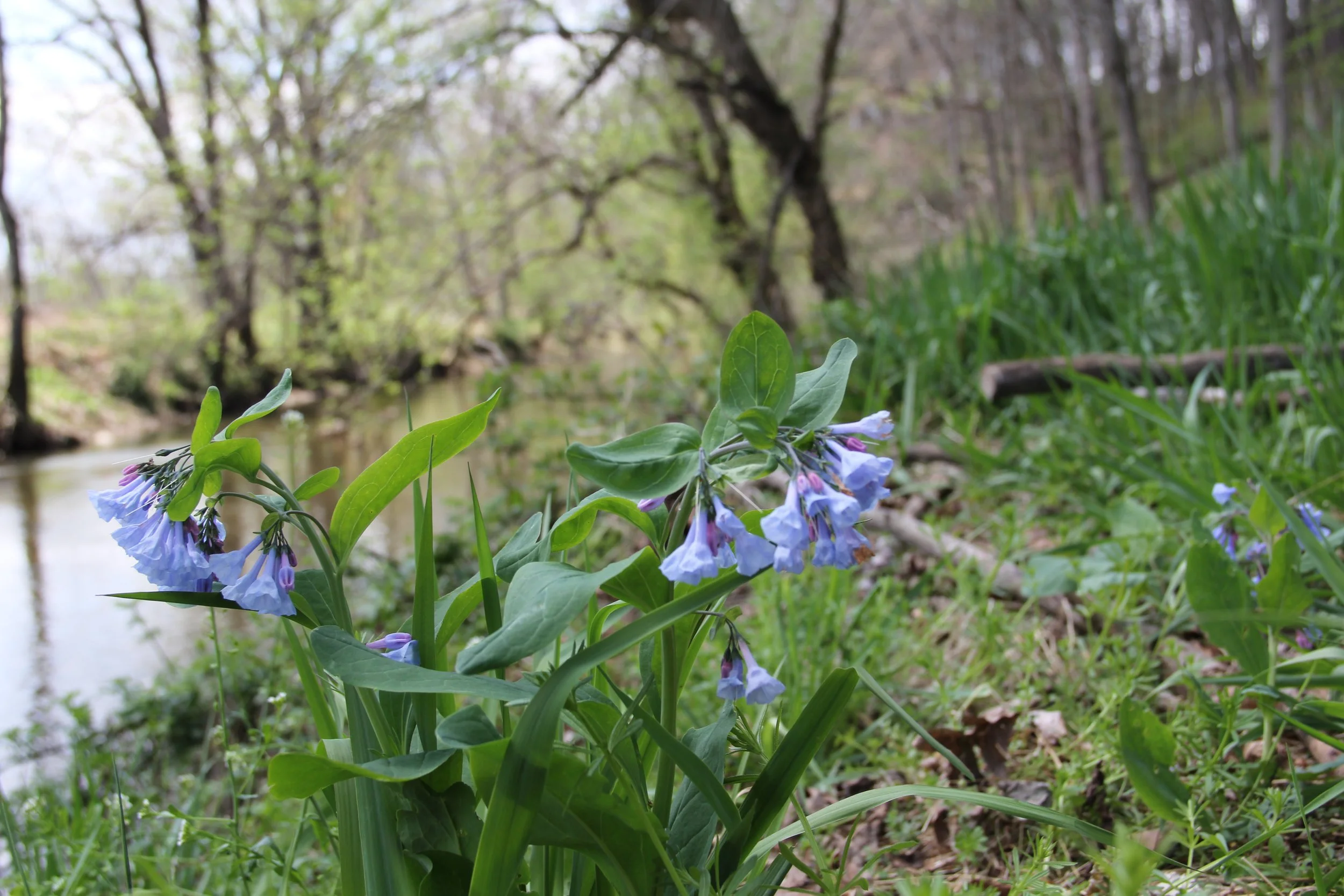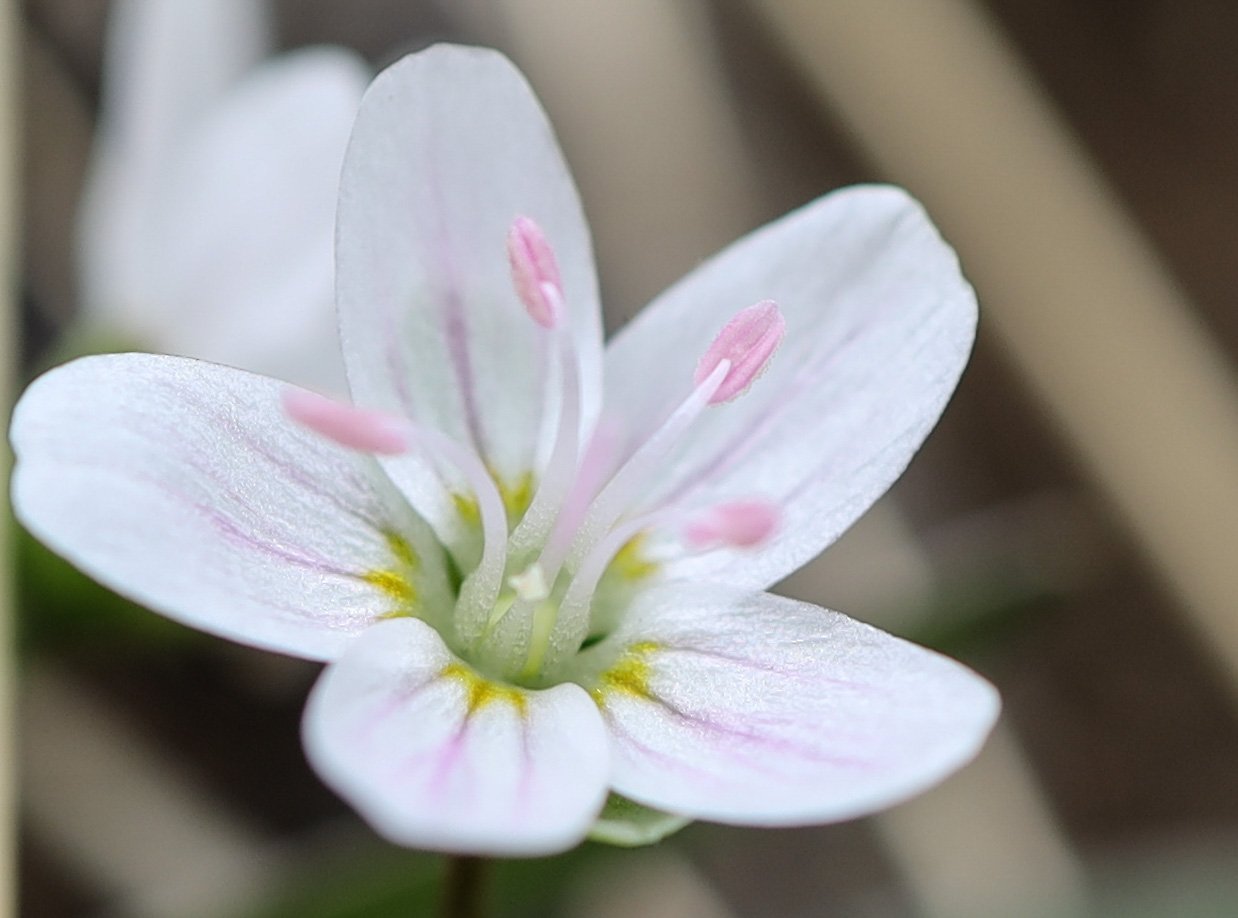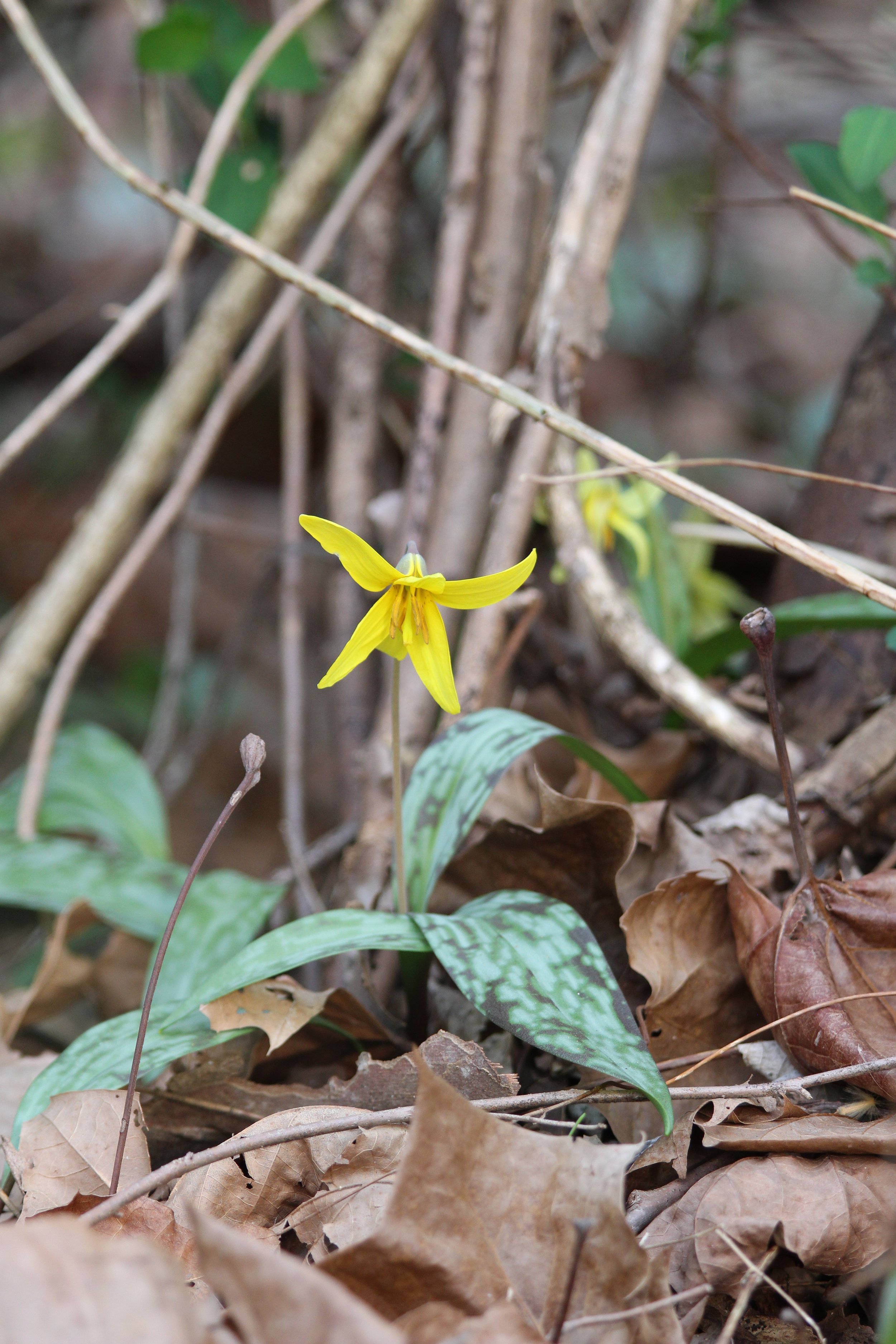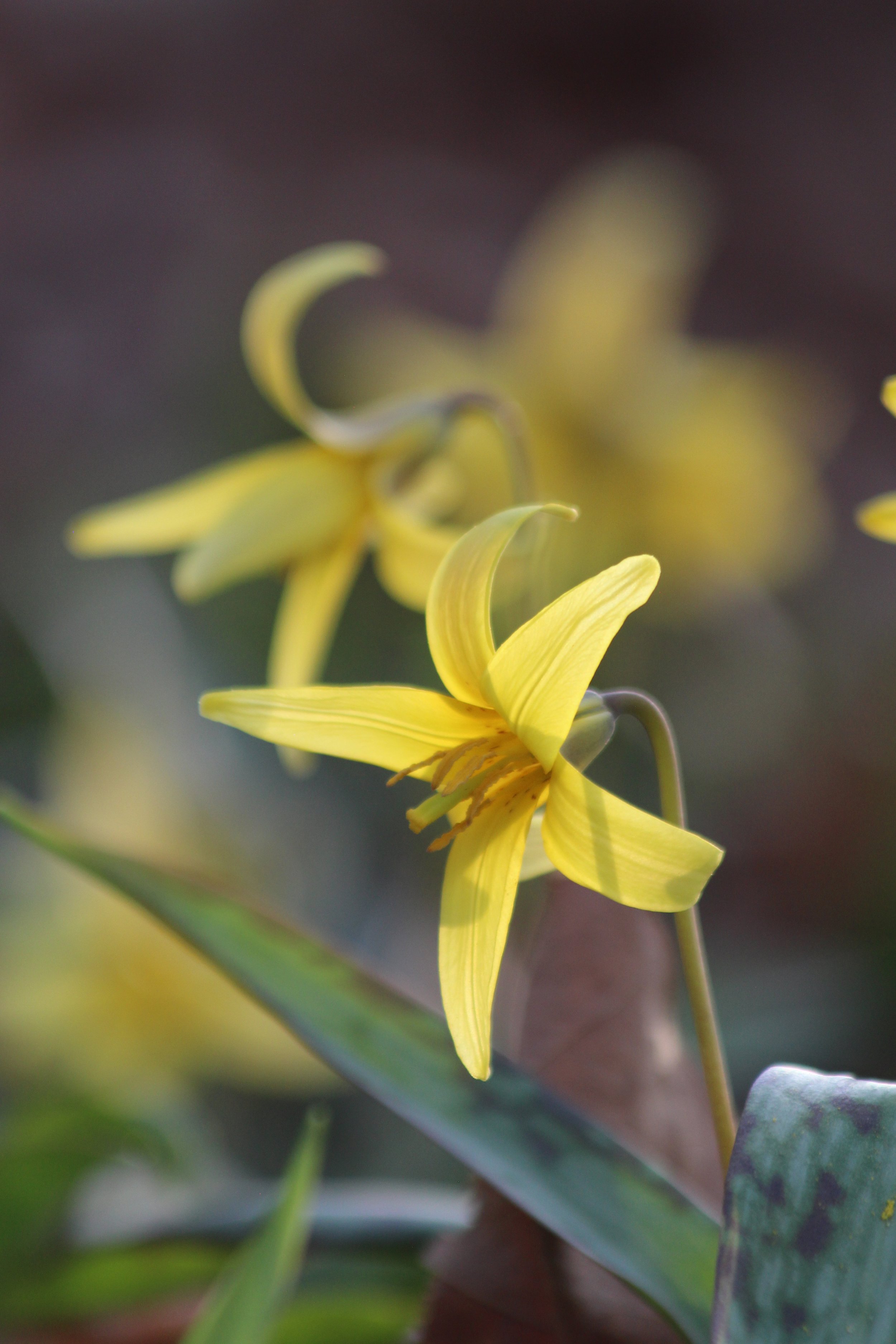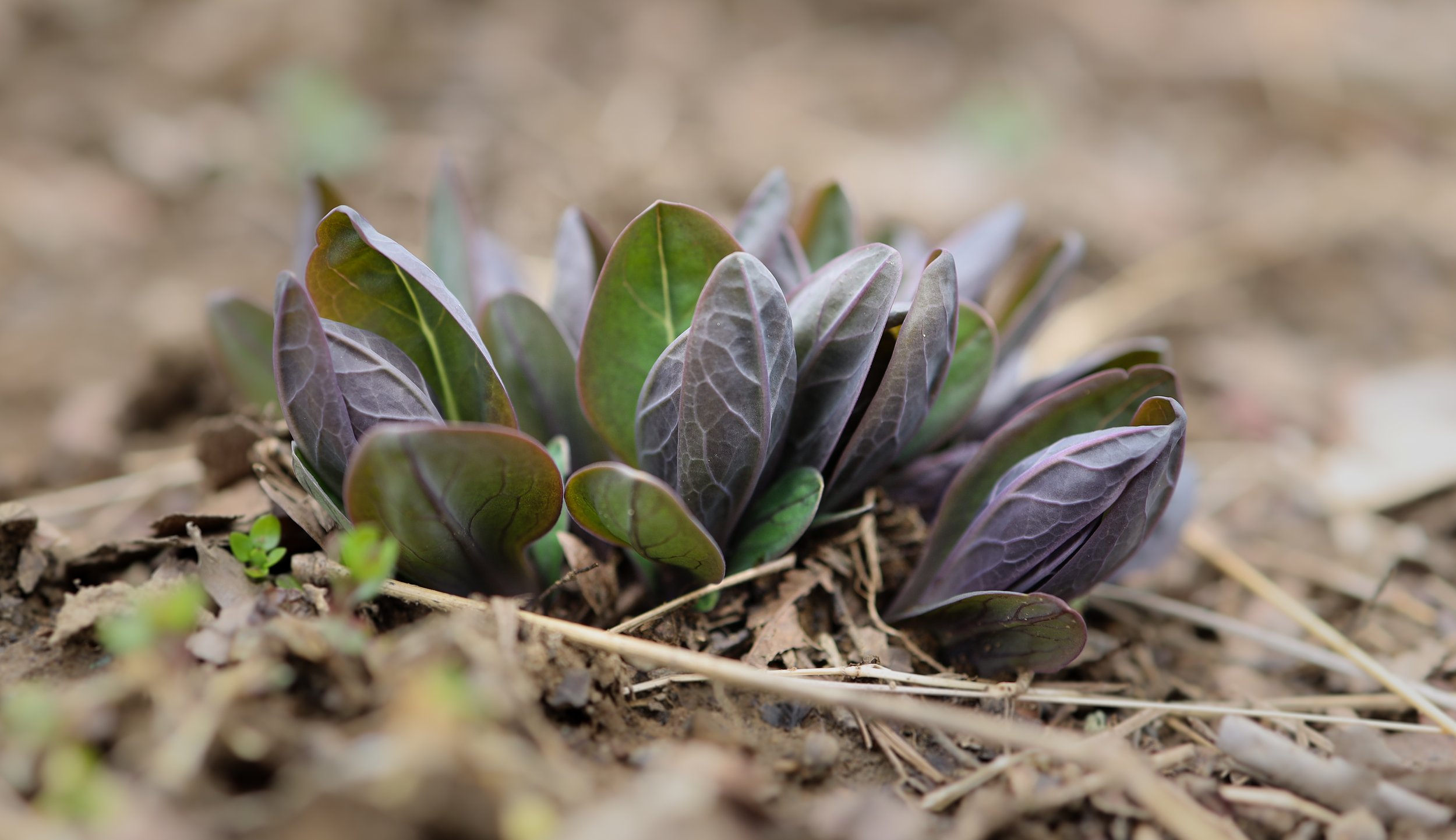Four Ephemerals to Welcome Spring
OSGF
Winter’s grips are as faint as ever as we greet the Vernal Equinox. With it comes longer days filled with more light, warmer days, and plants bursting forth and our native spring ephemerals are right in step. Ephemerals, by definition, are only here for a short time and have strategically placed themselves at an optimal transitional point– taking advantage of the open forest canopy and the warming temperatures. Their presence in the landscape opens us up to the excitement of things to come and the lingering daylight. Here in the gardens and landscapes of Oak Spring, we are witnessing an abundance of spring ephemerals beginning to emerge. Read on to learn about a few of them to welcome in the beginning of spring.
Spring-beauty
Claytonia virginica var. virginica
Spring beauty is regarded as one of Mrs. Mellon’s favorite spring wildflowers. The genus, Claytonia is named after John Clayton, a Virginian whose plant material collections were central to the publishing of Johannes Gronovius’s Flora Virginica. This Flora was the first edition of what is now known as the Flora of Virginia, which provides a comprehensive look into the flora of the state.
Delicate and diminutive, the petals of spring beauty are white streaked with pink, which is brought out further by the pink anthers. As with all ephemerals, the bloom time is still relatively short. What remains for a while longer are the narrow green leaves, which resemble blades of grass. In the US, there are roughly 15 species of Claytonia, with a wide, inclusive range throughout the country. Damp forested floor is the most common habitat with the exception of the few species that are native to high mountain areas near snowbanks.
At Oak Spring they can be found dotting the edge of the paved path in Rokeby Woods property as well as along select trails on Little Oak Spring.
American trout lily
Erythronium americanum ssp. americanum
Trout lilies are part of the lily (Liliaceae), as is indicated in the common name.
Along the meandering banks of Goose Creek are the bright nodding heads of Erythronium americanum ssp. americanum. Named for its trout-like blotchy brown and green leaves, which emerge before flowering, the trout lily is a beloved favorite of many. Another common name is dog-toothed violet, which refers to the underground corm that resembles a canine’s tooth.
This is one of many spring wildflower species that have unique means for their seed dispersal. If you’ll recall from one of our previous blog posts, myrmecochory is the distribution of seeds by animals– in particular case, this animal is instead an insect. The seeds of trout lily, which develop in early summer, are black and have a small morsel of fatty tissue attached to them called an elaiosome. This tissue is lipid-rich which is very attractive to ants, who gather the seeds, take them back to their nest and feed the elaiosome to their young. The seeds are then tossed aside and left to germinate on their own.
Virginia bluebells
Mertensia virginica
It’s no secret that Mrs. Mellon’s favorite color was blue; her use of the color in her Sunday Kitchen, her linens, her painted floors, and more are a testament to this. It’s only logical then that another obvious favorite of Mrs. Mellon are the Virginia bluebells. Clusters of faint lilac leaves that quickly turn to spring green emerge first, followed by the unfurling of flower stalks. Once out these ephemerals dot the landscape, as though the blue hues of a spring sky in midday were reflected back onto the forest floor in a blanket. The flower buds first emerge a faint pinkish, transitioning to the recognizable blue we all, including Mrs. Mellon, love.
The genus Mertensia was named after German botanist Franz Karl Mertz. The specific epithet, virginica, notes its presence here in Virginia. Despite the common name, Virginia bluebells is not our state flower– however that doesn’t stop it from being celebrated by Virginia residents. The native range of Virginia bluebells in fact extends far north into New York, stretches into the northern sliver of Alabama, and moves west into Wisconsin.
Sometimes also called Virginia cowslip, this species is common in moist woodlands, mesic rich soils, and often in floodplains. The flowers are rich in nectar and pollen for early bumble bees and Queen bumble bees, who are almost the exclusive pollinators of this spring forb. There are also visually similar Bluebells species present in Asia that are a prime example of how early splitting of the tree of life has led to intercontinental disjunctions between North American and Asian species.
All photos by Charlotte Lorick unless otherwise noted.
References:
Benage, Megan. “BWSR Featured Plant.” BWSR Featured Plant: Virginia Bluebells, Minnesota Board of Water and Soil Resources , 2019, https://bwsr.state.mn.us/sites/default/files/2019-03/Plant-of-Month-April-2019-Virginia%20Bluebells.pdf.
Jakes, Kathryn A., and Annette G. Ericksen. “PREHISTORIC USE OF SUMAC AND BEDSTRAW AS DYE PLANTS IN EASTERN NORTH AMERICA.” Southeastern Archaeology, vol. 20, no. 1, 2001, pp. 56–66. JSTOR, http://www.jstor.org/stable/40713201. Accessed Mar. 2023.
M.R. Penskar and S.R. Crispin. 2010. Special Plant Abstract for Mertensia virginica (Virginia bluebells). Michigan Natural Features Inventory. Lansing, MI. 3 pp.
Moerman, Daniel E. Native American Ethnobotany. Timber Press, 2016.
Weakley, A.S., and Southeastern Flora Team 2022. Flora of the southeastern United States. University of North Carolina Herbarium, North Carolina Botanical Garden.
